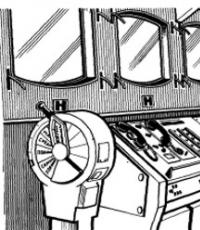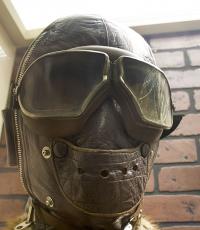Western bar. West Baray is a mysterious reservoir in Cambodia. Al Nasalaa stone in Saudi Arabia
Most people know the ancient building in Cambodia - Angkor Wat. This is perhaps the most advertised ancient object of architecture for tourists. There are also lesser-known ancient temples (as traditional history calls them) dotted around the area. This is a whole complex: Angkor Thom, Bayon, Ta Prohm, Phnom Bakheng, etc.

Map Link
As we can see, the temples (we will call them according to TI) are surrounded by colossal hydraulic structures - rectangular channels. And to the west of the complex, there is a rectangular reservoir called West Barai
Data from Wikipedia: West Baray is an artificial reservoir at Angkor in Cambodia, rectangular in plan and oriented from east to west. Located west of Angkor Thom. The dimensions of the reservoir are 8000 m by 2100 m and a depth of 5 m. It contained up to 80 million cubic meters of water. The West Barai is the largest barai in Angkor. Its construction began probably under Suryavarman I and was completed under King Udayadityavarman II. In the center of the bar artificial island West Mebon temple is located.
Those. historians are not sure when they began to build this reservoir, so they say "probably".
In our time, a water lock was built in the southern part of the dam, which made it possible to slightly raise the water level in the baray, thereby organizing a more rational use of water in the fields lying to the south. Today, the western part of the baray is filled with water all year round, and with the onset of the rainy season, the eastern part is also partially filled. The West Baray is a popular picnic and bathing spot for locals.
To be honest, this one inspired me to show this territory of Cambodia. Until that moment, I didn’t even think about looking at all this in Google maps, I thought that I wouldn’t see anything special there. And as it turned out, I didn’t do it in vain before, there were more questions.


First of all, the question arises: where is the soil from digging, if not deep, but a reservoir? The second question is: why was it needed in such an area? After all, it was possible to dig out a lot of small ones in a larger area (to collect water), distribute them.
Island in the middle of a body of water

The island, like the reservoir itself, is oriented almost to the modern north. Practically, but according to Google maps - not quite to the north. There is some deviation.
Remains of a building in the center
With ruins

From this western baray there is now a barely noticeable, but wide channel in the past.
Now it is so silty that in its place there are fields:

Angkor Wat. The width of the channels is about 200m. Length - 1.5 km
To the north of Angkor Wat is the Angkor Thom complex, also surrounded by a canal, but already fairly silted, about 80m wide. But the perimeter of this channel is 3.2x3.2 km
From the north, such a channel flows into it
On the territory of a whole group of buildings:
The jungle is small. Everything else is fields. The area outside Angkor is very densely populated
On the territory of Angkor Thom there is such a body of water in the shape of a man with his arms outstretched (or very similar to it):

Size: approximately 450x450m
Northeast of Angkor Thom we see a small area (along the perimeter of the surrounding canal) the Preah Khan temple and another already silted rectangular reservoir:

Perimeter 3.5x0.9km
In the center of the reservoir there is an island with such a pond and a structure very similar to a fountain
The pond itself is in such thickets. Map Link
Nearby is an even larger body of water:

Perimeter 7x1.7 km
Fields on the expanses of the silty expanse of the former reservoir
In the center of the former reservoir there is also a temple or structure:
The entire hydraulic complex in drawing
West of Angkor there are more similar objects:

Link to map
In the center are the remains of the building. Perhaps the locals pilfered for building materials
Another object:

Perimeter 600 x 600m. Map Link
Direction - not to the modern north
Remains of buildings
According to Google maps in the vicinity, I found several more small silted reservoirs
The most detailed alternative version the purpose of this entire complex is told by A. Makhov
He attributes all this to the air defense system (air defense). technical purpose. But very strange. Why such relief delights, bas-reliefs, etc. At military facilities, everything is ascetic and no frills.
***
I will try to convey my opinion about finding such bodies of water that are unnecessary in size (they could have just dug deeper, but smaller in area).
It is known that the temples of Cambodia were built using building materials: laterite, sandstone, brick. There is a complete mystery with brick - it needs to be fired, but no furnaces have been found. Sandstone - it needs to be mined somewhere, transported. Yep, jungle. I think that this is not sandstone, but concrete. As in the examples
Constructor from blocks of ancient masonry for modern restorers in Angkor. Agree, we need mountains to cut it all down there. And in the district - only the plain.
But laterite is worth dealing with.
As you can see, laterite is mined just from under the feet. Most likely, in Cambodia, this material for construction (laterite) was mined in the same way. And at the same time, it was taken out in the places of future rectangular channels. At the same time it is beautiful when it is filled with rainwater and protected from animals. And judging by this bas-relief:
In the past, not only elephants lived in the jungle
During the mass production of blocks, entire pits were formed, which were also filled with rainwater. And they, these quarries, are next to the temple complexes. The logistics are minimal. And they also got a beautiful view of the reservoir, plus the presence of water during, say, droughts. Fish farming is also possible as a side use.
The laterite blocks themselves most likely petrified in the air over the years (reaction with CO2). And initially, their cutting down (as in the photo above) took place with primitive tools such as a hoe. And not necessarily even from iron.
To this day, the purpose of these temples remains a question. After all, this is not a residential area. But this question does not apply only to the temples of Cambodia.
Skeptics say that in the past there were no civilizations with advanced technologies and incredible structures. They try to explain each strange artifact or trace of the past from their point of view - they say, this is done by hand, and this is a natural formation.
However, there is such convincing evidence of the presence of advanced civilizations in ancient times that even the most convinced skeptics and rational scientists cannot refute them.
This archaeological complex called Sahasralinga is located on the Shalmala River in the Indian state of Karnataka. When summer comes, and the water level in the river drops, hundreds of pilgrims come here.

It got its name thanks to the numerous (sahasra = thousands) "Lingas" - stone dressings, of the most diverse shapes and sizes, carved on stones.
When the river level drops, a variety of mysterious stone figures, carved in ancient times, are exposed from under the water. For example, this amazing education. Are you saying it's handmade?

2. Caves of Barabar
Barabar is the generalized name of a group of caves located in the Indian state of Bihar, near the city of Gaya. Officially, they were created in the III century BC, again, from the point of view of historians, manually. Is this so, judge for yourself.
In our opinion, to make such a structure of hard stone - with high ceilings, with walls so smooth, with seams that a razor blade cannot penetrate - is very difficult today.



3. South stone Baalbek
Baalbek - ancient city located in Lebanon. It has many different attractions. But most of all, the temple of Jupiter with multi-ton marble columns and the South Stone are surprising - an evenly hewn block weighing 1500 tons.
Who and how could make such a monolith in time immemorial and for what purposes - science does not know the answers to this question.

4. Baray Reservoir
West Baray is a man-made reservoir in Angkor (Cambodia). The size of the reservoir is 8 km by 2.1 km, and the depth is 5 meters. It was created in ancient times. The accuracy of the boundaries of the reservoir and the grandeur of the work performed are striking - it is believed that it was built by the ancient Khmers.

Nearby are no less amazing temple complexes - Angkor Wat and Angkor Thom, the layout of which is striking in its accuracy. Modern scientists cannot explain what technologies the builders of the past used.
Here is what Y. Iwasaki, director of the Osaka Geological Research Institute, Japan, writes:
“Starting from 1906, a group of French restorers worked in Angkor. In the 50s. French experts tried to lift the stones back onto the steep embankment. But since the angle of the steep embankment is 40º, after the first step 5 m high was built, the embankment collapsed. In the end, the French abandoned the idea of following historical technologies and installed a concrete wall inside the pyramid to preserve the earthen structures. Today we do not know how the ancient Khmers could build such high and steep mounds.
5. Cumbe Mayo Aqueduct
Cumbe Mayo is located near the Peruvian city of Cajamarca at an altitude of about 3.3 km above sea level. There are the remains of an ancient aqueduct, which was clearly not made by hand. It is known that it was built before the advent of the Inca Empire.

Curiously, the name Kumbe Mayo comes from the Quechua expression kumpi mayu, which means "well-made water channel." It is not known what civilization created it, but it is believed to have been around 1500 AD.
The Cumbe Mayo aqueduct is considered one of the oldest structures in South America.
Its length is about 10 kilometers. At the same time, if rocks were encountered on the path of the ancient path for water, then unknown builders cut a tunnel right through them. Check out the incredible photos and videos of this structure below.




6. The Peruvian cities of Sacsayhuaman and Ollantaytambo
Sacsayhuaman and Ollantaytambo are the remains of ancient structures in the Cusco region (Peru), on the territory of a huge archaeological park. The area of this park is 5000 square meters, but most of it was buried under an avalanche many years ago.

It is believed that these cities were built by the Incas using the most primitive tools. However, the huge stones of the fortress, tightly fitted to each other, as well as even traces of stone cuts in both ancient cities, are surprising. The Incas themselves were amazed at the grandeur of these buildings.
The Peruvian Inca historian Garcilaso de la Vega wrote about the Sacsayhuaman fortress: “It strikes with the size of the stone blocks of which it consists; one who has not seen this himself will not believe that something can be built from such stones; they inspire horror to those who examine them carefully.
Take a look at its remains and the blocks from Ollantaytambo and see for yourself that it is simply impossible to create this manually, without the help of high technology.



7. Moonstone in Peru
Here, in the Cusco region, in the same archaeological park, there is a curious attraction - a stone called Killarumiyoc. This is a Quechua Indian word, which literally means "Moonstone". It is believed that this is a sacred place.
People come here for rituals, meditations and purification of the soul. Pay attention to its unusual perfectly symmetrical shape and incredible quality of finish.


8. Al Naslaa Stone in Saudi Arabia
This famous cut stone called Al Naslaa is located in the Tabuk province of Saudi Arabia. The ideally even cutting line surprises all researchers - the surfaces on both sides are perfectly smooth.
Who exactly cut this stone and how remains a mystery. Scientists are sure that nature has tried here - they say, this is a perfectly flat line - this is a consequence of weathering. But this version seems untenable - there are no similar formations in nature.

9. Stone Ishi-no-Hoden
Near the Japanese city of Takasago is the famous huge megalith Ishi-no-Hoden. Its weight is about 600 tons. It is known that it was created BC. The stone is a local landmark - and looking at its photographs and old drawings, you understand why it is so popular.



10. Pyramid of Menkaure
The Pyramid of Menkaure (or Menkaure) is located in Giza and is one of the Great Pyramids. At the same time, it is the lowest among them - only 66 m in height (half the size of the pyramid of Cheops). But she strikes the imagination no less than her famous neighbors.
For the construction of the pyramid, huge monolithic blocks were used, the weight of one of them is about 200 tons. It still remains a mystery how it was delivered to the place of construction. The quality of the finishing of the blocks outside and inside the pyramid, as well as carefully crafted tunnels and internal chambers, is also surprising.


In this pyramid in the 19th century, a mysterious basalt sarcophagus was discovered, which was decided to be sent to England. But along the way, the ship got into a storm and sank off the coast of Spain.
However, this is still not a complete list of amazing sights, looking at which you want to rewrite history books. And we will definitely tell about them in other publications on this topic.
Man-made "reservoir".
Barai is a man-made reservoir surrounded by dams, the practicality of which was combined with redemptive symbolism: the distribution of water by the monarch guaranteed the continuation of life on Khmer land and confirmed the very divine essence of the ruler, who was identified with Indra.
During the decline of the Khmer Empire, the institution of the monarchy perished, and after it the system organized by it, part of the work of which was to support the barai. The barai stopped cleaning, they swamped, the water became undrinkable, and due to the lack of a channel, malarial mosquitoes began to breed in the waters of the barai.
Barai has a sacred meaning: if the entire temple complex is a model of the Universe in the center with Mount Meru, then the reservoirs surrounding the temple (barai) are the personification of the universal Ocean. At the same time, they carried a direct irrigation purpose.
Barai Indratataka is one of the first samples of Khmer hydraulic structures.
The largest barai are located near Angkor - East and West Barai. They have rectangular shapes measuring 8×2.4 and 7.5×1.8 kilometers, respectively. East Baray was supposedly 3 meters deep and held 37.2 million cubic meters of water.
Write a review on the article "Baray"
An excerpt characterizing Barai
There was silence for a few seconds as the young man settled himself on the step. Only in the back rows of people squeezing to one place, groaning, groans, jolts and the clatter of rearranged legs were heard.Rostopchin, waiting for him to stop at the indicated place, frowningly rubbed his face with his hand.
- Guys! - said Rostopchin in a metallic voice, - this man, Vereshchagin, is the same scoundrel from whom Moscow died.
The young man in the fox coat stood in a submissive pose, with his hands clasped together in front of his stomach and slightly bent over. Emaciated, with a hopeless expression, disfigured by a shaved head, his young face was lowered down. At the first words of the count, he slowly raised his head and looked down at the count, as if he wanted to say something to him or at least meet his gaze. But Rostopchin did not look at him. On the long, thin neck of the young man, like a rope, a vein behind the ear tensed and turned blue, and suddenly his face turned red.
All eyes were fixed on him. He looked at the crowd, and, as if reassured by the expression which he read on the faces of the people, he smiled sadly and timidly, and lowering his head again, straightened his feet on the step.
“He betrayed his tsar and fatherland, he handed himself over to Bonaparte, he alone of all Russians has dishonored the name of a Russian, and Moscow is dying from him,” said Rastopchin in an even, sharp voice; but suddenly he quickly glanced down at Vereshchagin, who continued to stand in the same submissive pose. As if this look blew him up, he, raising his hand, almost shouted, turning to the people: - Deal with him with your judgment! I give it to you!
West Barai is a man-made reservoir in Angkor (Cambodia). The dimensions of the reservoir are 8 km by 2.1 km, and the depth is 5 meters. It was created in ancient times. The accuracy of the boundaries of the reservoir and the grandeur of the work performed are striking - it is believed that the ancient Khmers built it.
Nearby are no less amazing temple complexes - Angkor Wat and Angkor Thom, the layout of which is striking in its accuracy. Modern scientists cannot explain what technologies the builders of the past used.

Here is what Y. Iwasaki, director of the Osaka Geological Research Institute, Japan, writes: “Starting from 1906, a group of French restorers worked in Angkor. In the 50s. French experts tried to lift the stones back onto the steep embankment. But since the angle of the steep embankment is 40º, after the first step 5 m high was built, the embankment collapsed. In the end, the French abandoned the idea of following historical technologies and installed a concrete wall inside the pyramid to preserve the earthen structures. Today we do not know how the ancient Khmers could build such high and steep mounds.






